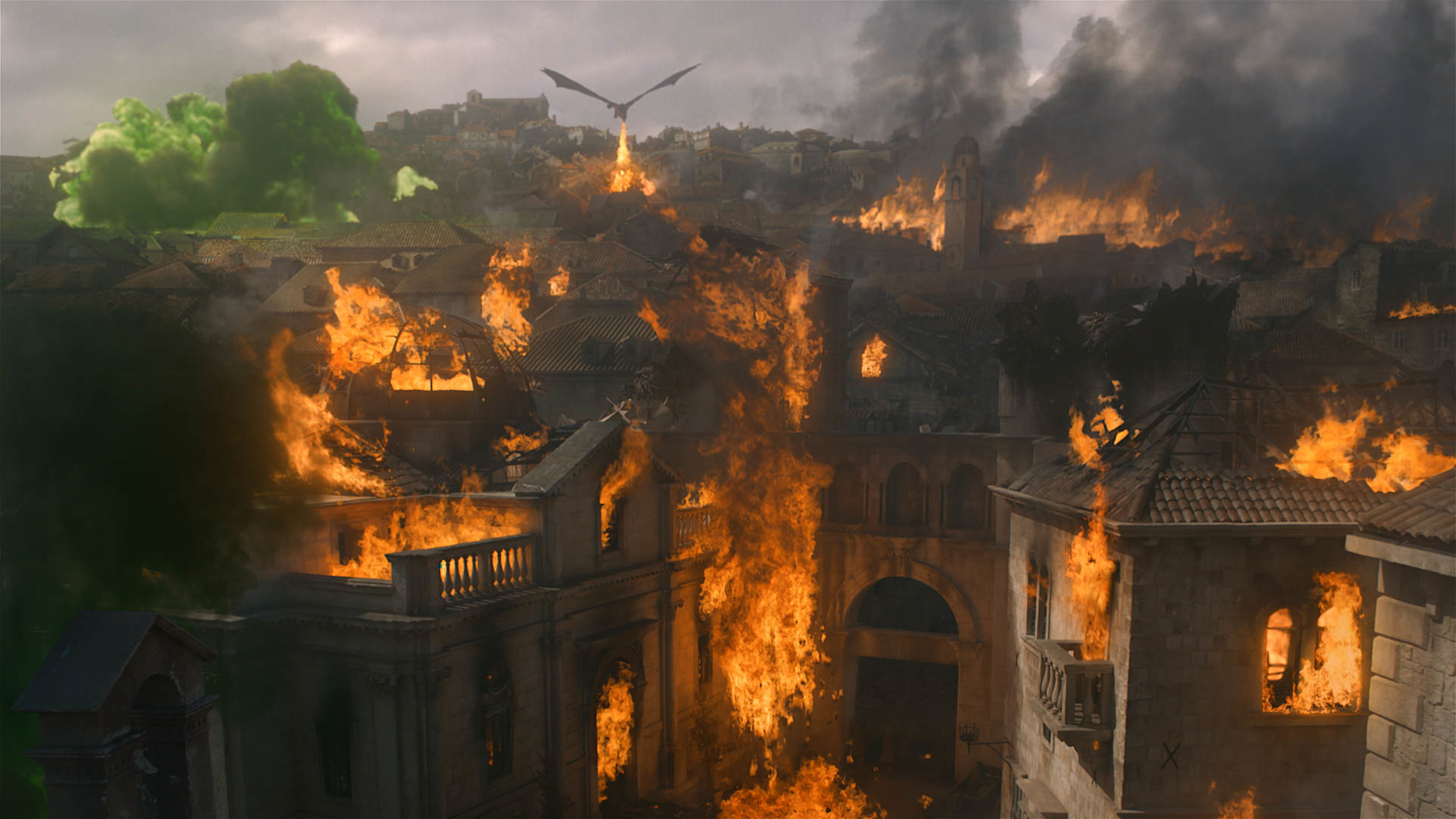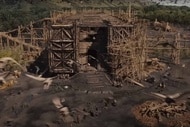Create a free profile to get unlimited access to exclusive videos, sweepstakes, and more!
Science Behind the Fiction: How many people did Daenerys likely kill at King's Landing?

Reactions to the penultimate episode of Game of Thrones have been mixed. Tying up a story of this scope can be complicated and are likely not to please everyone, and if this episode accomplished one thing, it proved that not even a show like GoT can pull it off.
Despite perceived failures in the eyes of some viewers, Season 8, Episode 5, "The Bells", was successful in at least one regard. It effectively showcased the ravages of aerial bombardment and the horrors of war when embarked upon by mad leaders.
**Spoiler Warning: There are spoilers for the most recent episode of Game of Thrones below.**
If the fight for the Iron Throne is, indeed, a game, then we're in the final gambit and "The Bells" is Daenerys' kill stroke.
The subsequent battle sequences are massive in their destruction and, before long, it's clear that Cersei's time in King's Landing is at an end. The titular bells sound, signaling surrender. And that should have been the end of it, but something in Daenerys cracks. You can see it in her eyes. There will be no calm surrender. There will be only fire and blood.
The citizens of King's Landing run, scream, and burn. Buildings crumble around still fighting forces and those within the city, even and especially those characters with whom we've spent eight seasons, fight for their lives against the immeasurable might of a literal monster. And her dragon.When the carnage finally ends and the flames are left to die out, the death toll is, well…
THE COST OF A THRONE
The population of King's Landing isn't precisely known, which is understandable, seeing as we can't expect the people of Westeros to operate a fully functioning census. But we have a couple of touchpoints by which to make an estimate. In the Season 3 episode "The Bear and the Maiden Fair," Jamie Lannister states that the population of King's Landing during Robert's Rebellion was half a million. This number jives with the source material. That half-million figure is also provided by Tyrion within the pages of George R.R. Martin's A Storm of Swords.
Populations, however, do fluctuate, and we could expect that number to have moved in the years since the end of the Targaryen dynasty. In the Season 7 finale, Tyrion says there are a million people living in King's Landing, a number he repeats in "The Bells."
Here on Earth, population growth during the Middle Ages was slow, ranging from 10 to 15 percent growth per 100 years. Even now, with the benefit of modern medicine and technology, it took roughly 50 years for the world population to double from 3 to 6 billion. With all of that in mind, it's unlikely that the population of King's Landing doubled in a couple of decades. Which means either the characters in power are pulling numbers out of thin air or are speaking hyperbolically for effect.
For our purposes, we'll stick with the 500,000 figure as the native population of King's Landing. Add to that the members of the Iron Fleet and the ground troops brought in to defend the city, as well as any refugees from outlying communities who might have come within the borders seeking safety, and the number could be closer to the million suggested by Tyrion.
Estimating the casualty count of Daenerys' attack is difficult to accomplish but we can look at some reasonably similar events in our own history to get an idea. Toward the end of World War II, Allied forces embarked upon a bombing campaign over the East German city of Dresden. Over the course of three days, thousands of tons of explosives and incendiaries were dropped over the city, destroying property and killing thousands.
The similarities between Dresden and King's Landing are striking. The native population of Dresden prior to the assault is estimated at approximately 642,000 people. Though, owing to an influx of military personnel and refugees, some historians estimate there were closer to a million people in the city during the attack. For precisely this reason, the number of dead is impossible to definitively determine, but estimates reach upwards of 135,000 individuals.
Given the aerial onslaught raining fire down on defenseless people, the experiences of those on the ground in Dresden would have been horrifyingly similar to those in King's Landing. For all intents and purposes, the Allied forces might as well have been a dragon.
Based on what we see on screen and historical comparison, King's Landing was decimated, literally. We can expect that at least one in every 10 citizens of the capital was killed during the assault, maybe more.
AFTERMATH
The lives lost during Daenerys' flaming temper tantrum would be bad enough, but the damage doesn't end there.
We see, on screen, countless people huddled against crumbling walls, nursing their wounds. For every group of people consumed by Drogon's flames, there is a corresponding group along the fringes who were badly burned but not immediately killed. Westeros would now be filled with thousands of people, all suffering third-degree burns over large portions of their bodies, the complications of which can be fatal.
When the body suffers massive burns, the immune response can overreact in a number of horrifying ways. Sufferers could endure rapid fluid loss, causing a dangerous drop in blood pressure. Burns hinder the body's ability to keep infections out and an already compromised immune system may struggle to respond. These infections can spread to vital parts of the body, causing organ failure.
Even as recently as a few decades ago, burns covering more than half of the body had a good chance of causing death. It's reasonable to assume that might describe the injuries of countless people still living in the city.
The normal method of treating severe burns is to cover the affected area with sterile bandages and apply antibiotics, both of which would be in short supply in King's Landing, even before the city's infrastructure was destroyed. In Westeros, disease can be even more deadly than vying for the throne.
Estimating death tolls, even in the real world, is not a perfect science but, based on what we see on screen, what we know about the population of the city, and the nature of the attack, the immediate death toll should reasonably be at least 100,000 people burned alive or crushed by debris. A further 50,000 people will die as a result of their burns, lacking the necessary treatment. And those estimates are conservative. Drogon's flight will be long remembered in the seven kingdoms and after effects of the day will ripple well into the future.
While Dany's death ride over the city was a spectacle for the screen, it was not the most strategic tactical move. Surely, every person still living within rock-throwing distance of the Iron Throne lost friends, family, or both to the flames, and probably suffered some grave injury themselves. Not to mention the loss to property and way of life. Not exactly a recipe for a loyal populace.
Should Daenerys survive the final episode of the series, she'll likely have bigger problems than her own fractured mental state.
The final episode of Game of Thrones airs this Sunday, May 19 on HBO.














